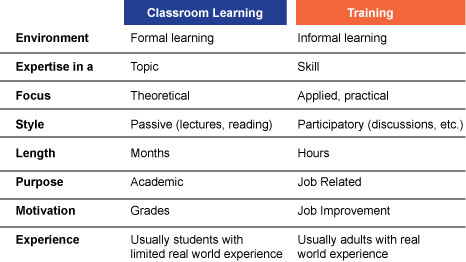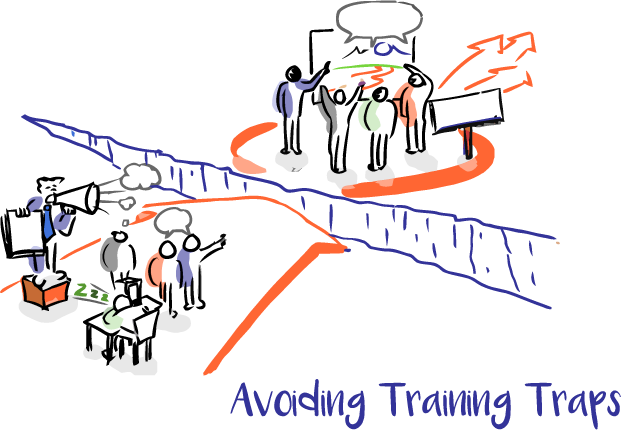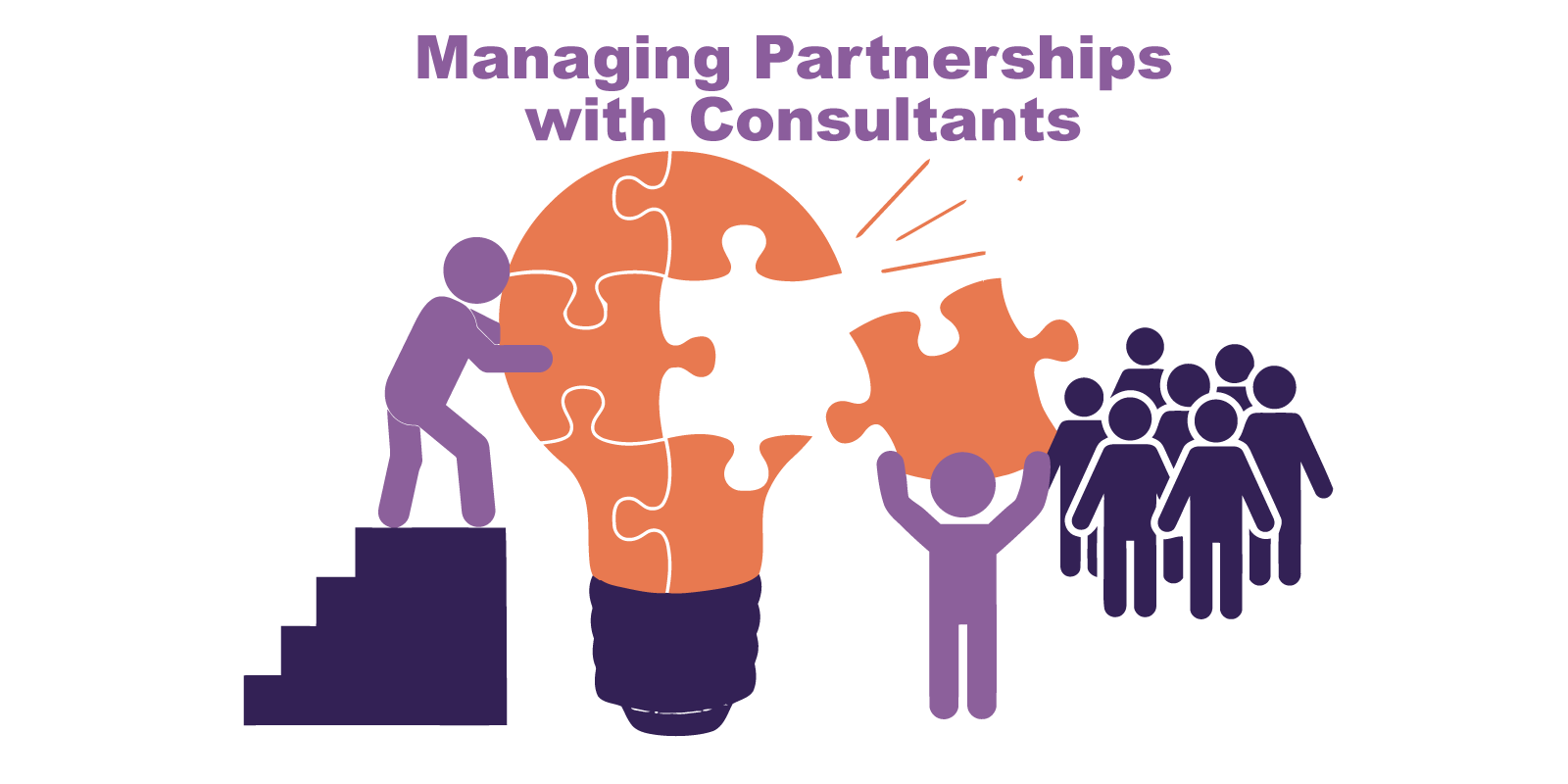Training 101 is the first article in our training series, Avoiding Training Traps . This overview article sets the stage for our best practice, evidence-based training approach.
Most of us working in the social sector have conducted training, but few of us are truly trainers. Often times, we’ve inherited a presentation and stand in front of a room reciting the slides. When I talk with professionals in the social sector, most can identify what isn’t good training but when I ask what is good training, folks often fall silent.
A good place to start is understanding where training fits in the education continuum. And what that means.
Classroom Learning vs Training
All types of learning are education – whether teaching yourself a skill, enrolling in college or attending a job-related training. But what we learn and how we learn it is very differently in each one.
We often emulate lecturers whose classes we sat in during college. But there’s a big difference between classroom learning and training.
- Classroom learning is formal education taught by an instructor. It is broad to develop expertise in all aspects of a topic.
- Training is more informal education facilitated by a trainer. It is focused on mastering a particular task or skill.
Devi has a great deal of experience in training so to help you think through differences between classroom learning and training take a look at our chart below — these differences should drive how you train and how you engage participants. It’s important to note that these are generalities and exceptions abound. For instance, graduate school for professional degrees use group work quite a bit and highly technical training for things like computer programming can be much less participatory.

Principles of Adult Learning
Training, more than classroom learning, tends to have more adults as participants. And adults learn differently than younger students. Adults have a lot of competing priorities on their time and focus. They retain information that is interesting, applicable to their daily lives and reinforced with interactive exercises. Make sure the information is realistic, practical and useful.
When training adults, it’s also important to remember adults are far less homogenous than younger students. They have a lifetime of different experiences, different ways of understanding and learning, and different ways of interpreting what you’re saying.
Principles of Facilitation & Training
Your job is to facilitate a learning experience with your participants. In order for training to be really effective, you need to be a really effective facilitator. Keep in mind the key principles of facilitation and training.
Key Principles of Facilitation:
- Interaction: There is a lot of participation and engagement
- Equality: Trainers and participants work together as part of the learning process
- Shared Responsibility: Participants share in the learning success.
Key Principles of Training:
- Set expectations at the beginning
- Create a safe space
- Keep it simple
- Stick to the script
- Keep an eye on the time
- Train individuals, not groups
Taking the time to understand the basic of training will make your training stronger and your participants will retain what they learned – which can improve outcomes. Facilitated training is designed, it doesn’t just happen. It harder than it looks but we’re here to help. Future articles will go in-depth to each of the Key Principles and Training as well as provide insight on effective interactive activities and how to neutralize negativity.
For more information on a tailored “train-the-trainer” or other training needs, contact Amy at [email protected].







